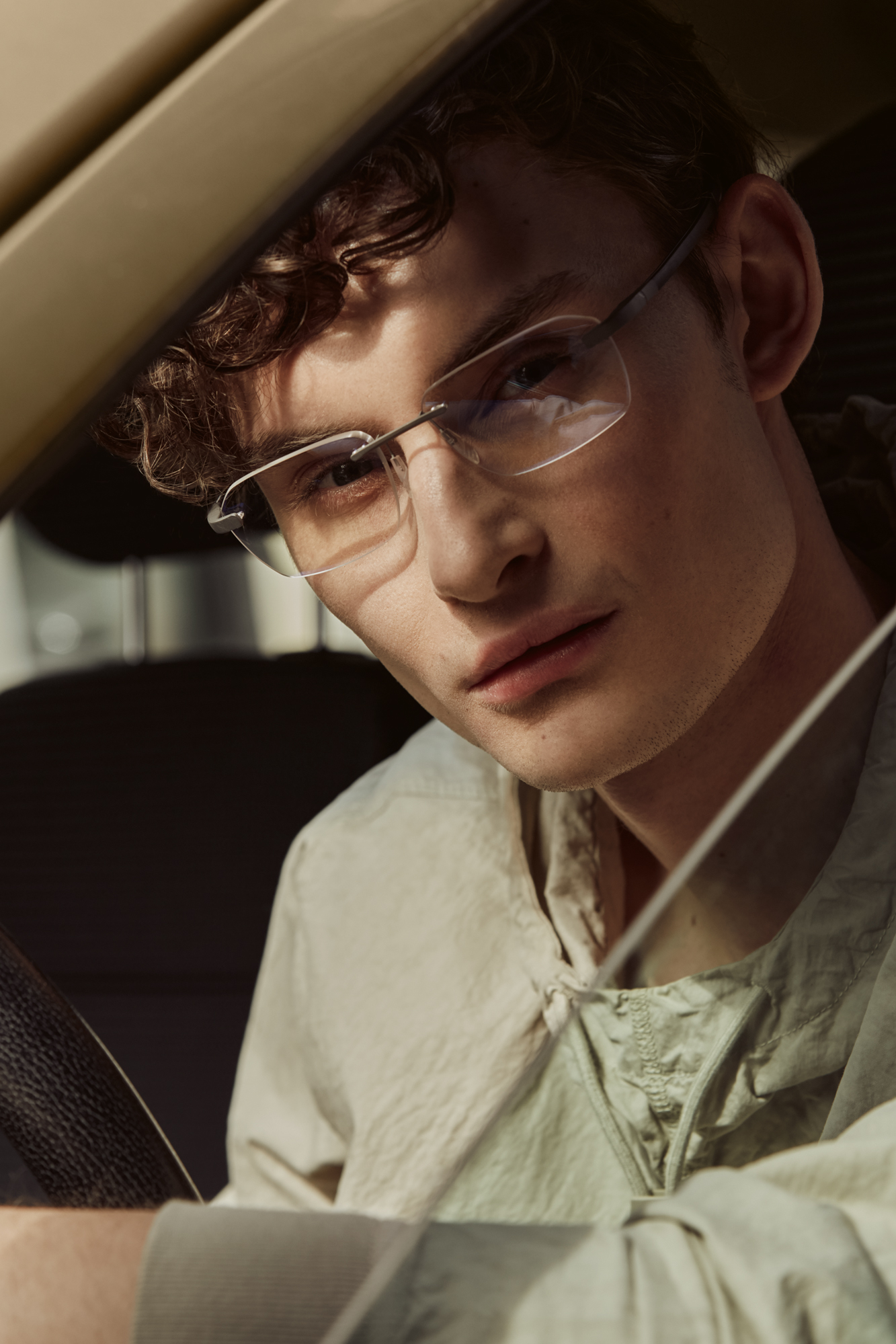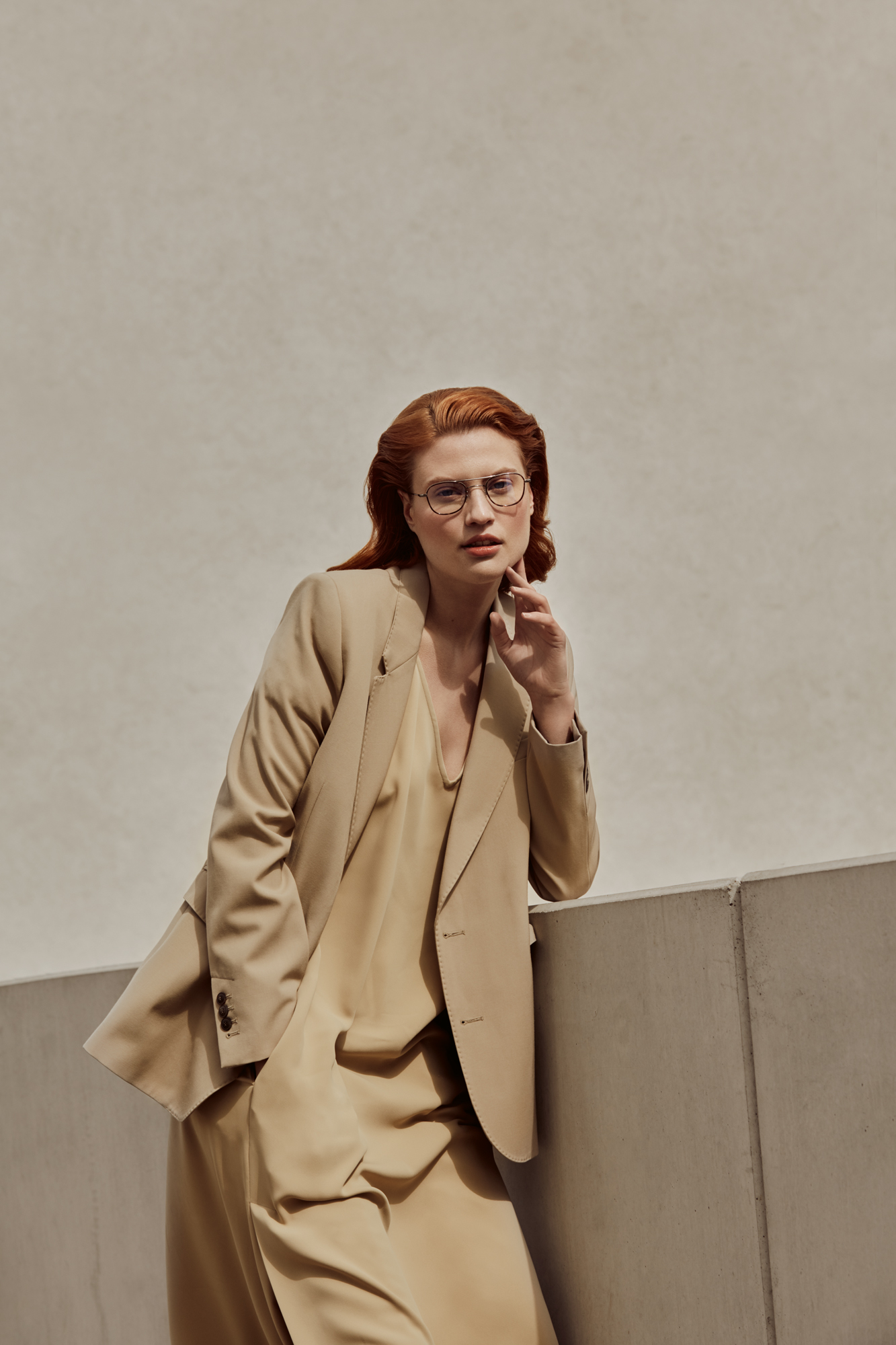L’AMY LUXE EXPLORES NEW APPROACHES
Based in the storied French Jura region, L’AMY can look back at a history of more than 200 years of influencing the eyewear industry. In the 1980s, L’AMY became one of the first companies to manufacture eyewear under license for fashion labels. Today, the French company operates under the name L’AMY LUXE and has evolved far beyond the licensing business. Instead, the focus is on full-fledged luxury goods with brand-new approaches. We sat down with CEO Dominique Alba to learn about the company’s goals and motivations in exploring new horizons. Welcome to a must-read for independent opticians.
Hi Dominique, L’AMY is one of the big names in the eyewear industry. The company can look back on a heritage that goes back more than 200 years. What drove the founder back then?
L’AMY has always been driven by technology and innovation. The history of L’AMY is a venture of technicians and engineers who, gradually in the early 1960s, started integrating design with marketing.
Your company hails from the French Jura region. The area is still considered as an incubator for high-quality eyewear development and production. Historically, what was the contribution from L’AMY?
I do believe we are the most innovative company in our industry, but also the most high-end. In the same company group, we have Maison Henry Jullien which received the coveted label of Enterprise du Patrimoine Vivant. Also the McLaren license as a multiple award winner as the most innovative collection on the market. That allows us to offer optical stores the two most wanted segments of the luxury market: excellence in craftsmanship and innovation with no limits.
We’ll cover these two lines separately. Starting with L’AMY, what were the relevant milestones in the company’s history?
L’AMY commands a long and exciting history. Milestones in terms of manufacturing include our first ‘modern’ factory in 1883 or the state-of-the-art galvanic treatment factory in 1986. Production know-how runs deep in our DNA.

»MLSUP024«
Starting in the 1980s, L’AMY specialized in the licensing business. Which major brands were part of the portfolio at that time?
I believe Lacoste is the brand with which L’AMY had the longest partnership and the best achievements. But we had many collaborations. It would be easier to list the brands which do not have eyewear licenses.
You have since abandoned these licensing deals. Did other corporations in the industry become too powerful?
Yes, that is one reason. But I am convinced that for many years, a positioning that is too ‘generalist’ no longer aligned with the fast-moving market.
So license brands don’t seem to be that attractive to you anymore?
The license itself is not a competitive edge neither for L’AMY nor for the optician. In the meantime, the end consumer has evolved. That goes for customers’ knowledge of the brands, but also of the products, and even the marketing. We think that the status of ‘generalist’ is obsolete.
And what’s the future?
We are convinced that the years to come will be the years of focus and differentiation.
Has the market in general changed and the old concepts just don’t work as well anymore?
No, concepts are still a key factor for success, regardless of their age. What does matter is that the concept is perceived as relevant by the consumer.
That is a shift, indeed. In your opinion, which changes have had the greatest impact in the last ten years?
We can see three big changes: The first is the merger of big eyewear corporations, aiming at controlling the retailer and the consumer.
And the others?
Then we have the end of the era of fashion luxury licensing with the creation of in-house eyewear divisions aimed at controlling the entire value chain from production to consumer. And finally we see the emergence of new technologies like 3D-printing, virtual try-on, connected devices, smart lenses.

»MLONESEC01« & »MLSGPS02«
What’s the impact?
These structural changes within the market did not fully change the current landscape yet, but they are doing it deeply and lastingly. Eyewear companies have been the first to be impacted, but the heaviest impact will be on the optical stores which will have to focus on very clear strategies and offers for the consumer.
That might be a huge challenge. Part of your focus was the takeover of the Maison Henry Jullien in 2017. The brand is celebrating its 100th anniversary this year and stands for traditional luxury. What was the motivation behind the acquisition?
Henry Jullien is the last manufacture in the world that produces eyewear with this level of attention to detail and quality. At this level, this is not craftsmanship, it is art. At Henry Jullien, time is a value. Consider that it requires no less than 279 manual steps to manufacture a frame. This relationship to time, this artistic path, this willingness towards ensuring durability of the product, resonates strongly with a wide community of consumers. That makes Maison Henry Jullien a very modern company, fully connected to the main value perceptions of a big part of the population. Being so aligned to its time after one century is truly a small miracle. And a genuine source of enthusiasm for the team.
Was the acquisition also accompanied by a change in strategic direction?
Yes, it was. We decided to focus on the market of true luxury for three reasons.
Which are?
First, the true luxury segment has been registering the highest growth rate for the past 30 years. Second, this segment happened to be the most resilient to the crises over the last two centuries, as proven in the current pandemic crisis.
And third, this is a market that offers a high potential in eyewear because it has not been strongly serviced by the optical stores over the last decades, unlike many other fields within goods and services.
How come the luxury segment seems to be more crisis-proof than other price categories?
We can witness it for two centuries and clearly since the 1929 crisis. This segment has decreased much less than others, and, after each crisis, has started over way faster than all other segments. It targets 20 percent of the worldwide population. The wealthiest, the most educated, the most knowledgable. As a result, it’s the most resistant.
Your approach is very forward looking.
Yes, we believe that this segment offers an important, sustainable and differentiating growth driver both for the opticians and our company.
In 2019, you launched McLaren, a very technical label and a licensed brand. What’s different this time compared to the licensing business in decades past?
Innovation, innovation and innovation. This collection is really unique because of its technological content, but also by its absolutely stunning design.
Now, with Henry Jullien and McLaren as the only two remaining brands, you have streamlined your portfolio and concentrated fully on the luxury segment. Along with this development, you changed your name to L’AMY LUXE. Sounds like it also comes with an obligation, right?
Yes, it does and that is the reason why we stated it so clearly. It is not a short-term strategy or a marketing gimmick. It marks a strong and long-term strategic change.
What is the common denominator between these the two brands, which at first glance are very different?
To briefly summarize, there are two big luxury markets – and I am not talking about fashion – as of today and over the last two centuries. The first luxury market includes technological innovation and the avant-garde product. The result is an engineered product. The second luxury market describes craftsman products with an impressive level of attention to detail. The result here is an artist product.
So you can divide consumers into two segments?
Whatever the field you study, you will find this duality, also very well represented among the population. You can also recognize as a big advantage that each consumer from the luxury segment can be, at the same time, attracted by both types of products. You can have the most technological advanced music device at home and own a Steinway piano in your salon.
What does that mean for the optical industry?
This is exactly our proposal to the opticians. With only two brands you offer to your customers the best of the two worlds and you position yourself as the optical store of reference in your catchment area.
Will you continue to focus exclusively on these two brands in the future?
We will add several brands in the coming years, maybe one in 2021.
According to which criteria?
With the same strategic intent and the same positioning. We want to be the reference company in the world of luxury. The real one, not the fashion business.
At this level, only independent opticians come into question. How important are they for you?
They obviously are our primary targets, but I would dare to say we are a supplier who can, and has to, allow them to set up a differentiated, resilient and sustainable strategy. We can help them not only to resist but also to develop themselves in the years to come. I would also add that our size should comfort them. We are not a mega group which is going to give them instructions.
What developments do you see headed to the eyewear industry in the next ten years? Will there be further takeovers and consolidation?
Yes, the consolidation is going to continue because distribution structures are going to evolve as we have seen in many other fields. The big brands want to directly control the end consumer. They have already started. On the other hand, the technologies will modify the competitive environment, especially in the optical lens segment.
With that said, how can smaller and medium-sized brands still maintain their position in the future?
Staying focused and not trying, as in the past, to directly compete with the giants on the market. Back in the day when in France, the big hypermarkets decided to sell bread, everybody thought that the bakeries were about to disappear. The good bakers did not and they currently are among the top three or more profitable retailers.
How did they manage that?
Simply because they decided not to compete on prices and units but only on quality. I could mention dozens of examples like that in all the countries of the world.
That’s a ray of hope for independent opticians. How prepared are you at L’AMY LUXE for this future?
Luxury is a state of mind. Therefore it is essential that the whole company is focused on the same and only objective. Paradoxically it is easier to achieve that than working on several segments at the same time. However, that means to work on the entire chain and on each detail. This is what we started doing for several months and have to keep on doing in the coming years.
What role does the optician play in this?
We will succeed only with opticians in a balanced relationship and a common intent.
So you consider yourselves – together with the independent opticians – as well-positioned for the future?
My feeling is that the luxury segment will be, whatever happens, one of the more profitable segments for the independent optical stores in the coming years. With or without L’AMY LUXE. And we will do our utmost to ensure that it will be with L’AMY LUXE. After all, we almost invented the concept (laughs).
Thank you for these valuable insights, Dominique.
Find out more about the brand here! And check out the best luxury sunglasses on FAVR.
photo SACHA TASSILO HÖCHSTETTER
styling SHIMA KHAZEI
assistant DEAN FABER
make-up TINA PACHTA
models STEINUNN at MIRRRS, VICTOR at THE WALL MODEL MANAGEMENT
location MUNICH



